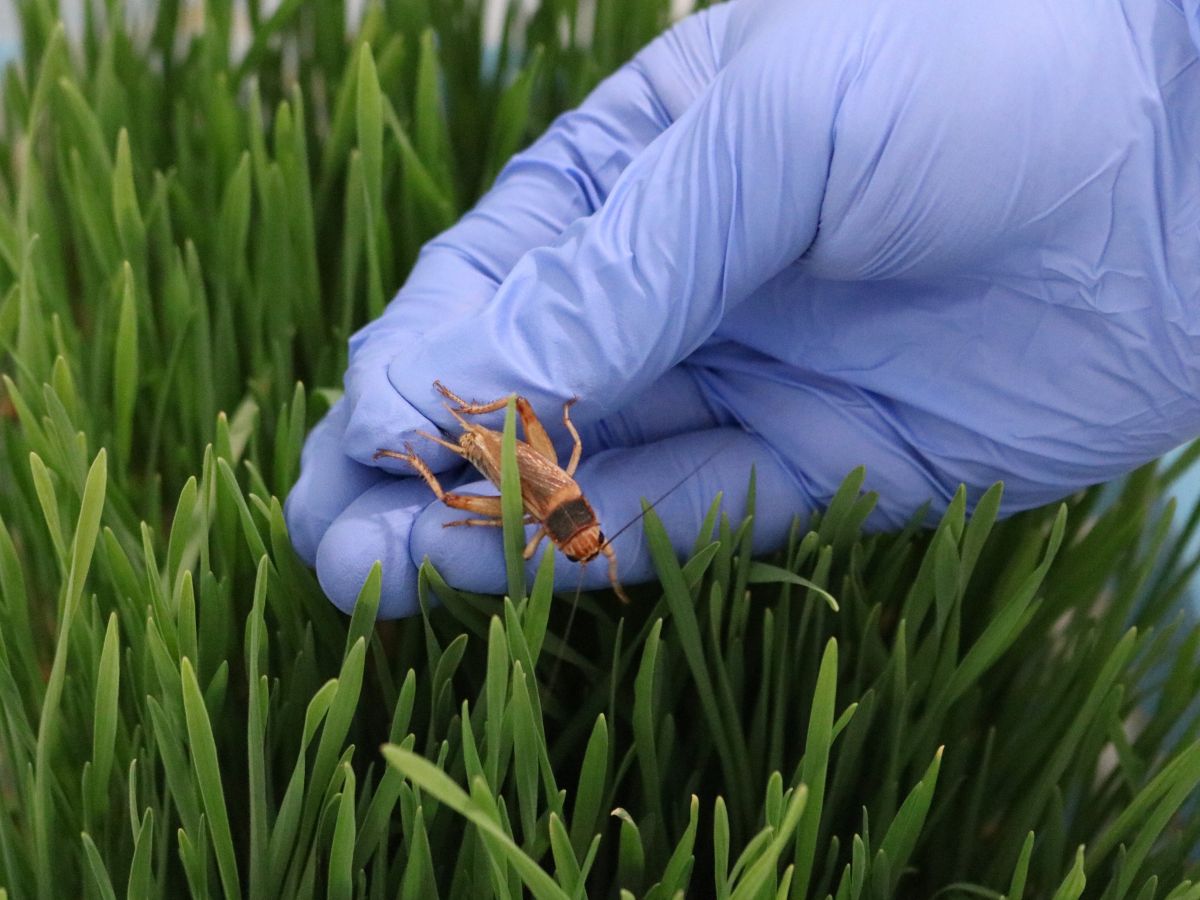Controlled processes are critical for the safe production and processing of crickets
Food technologist Dr. Oliver Schlüter on crickets as a food
27.01.2023
Since 2019, researchers in food4future have been working on innovations for sustainable and healthy food supply. Along with macroalgae, salt-tolerant plants, and jellyfish, crickets are a focus as alternative food sources. Under the leadership of Dr. Oliver Schlüter, a food technologist from the Leibniz Institute of Agricultural Engineering and Bioeconomy (ATB), sustainable insect rearing processes are being developed for urban indoor cultivation. The scientists around Schlüter have examined measures to minimize the contamination of crickets with microorganisms and derived recommendations for their production.
Post-harvest treatments with thermal processes can contribute to risk minimization, reducing the time required to reach the recommended residual moisture content during cricket flour production. Schlüter explains, "Many factors play a role in microbiological safety: therefore, for example, which is why germ counts must be controlled during insect production as well as during processing steps and subsequent processing paths, including the respective storage and packaging regimes, up to the final product. In principle, there is no difference to comparable conventional food processing chains. Safe production and processing controls potential risks and are the basic requirement for also utilizing the advantages of crickets as an alternative resource for sustainable and healthy food in human nutrition."
Sustainable and healthy nutrition with house crickets is possible
The potential of house crickets as a sustainable food source is enormous. Currently, these insects are mainlybred in cricket farms in Asia. In addition to their high nutrient content, such as proteins and fats, crickets also provide vitamins and minerals for human nutrition. They can also contribute to sustainable consumption because, compared to conventional protein suppliers such as beef or pork, they require fewer resources such as feed, water or land for their rearing and - depending on the production system - generally have a lower greenhouse gas balance.
House crickets have already been approved in the EU since 2022
In the spring of 2022, the European Commissionapproved the marketing of dried, frozen, or powdered house crickets (Acheta domesticus) as a novel food following a comprehensive scientific evaluation by the European Food Safety Authority (EFSA). What is new is that they may now also be used in processed foods.
However, approval has led to some consumer uncertainty, not least because of concerns about unintentionally consuming crickets in processed foods. However, the labeling requirements of European food law require foods to be clearly marked with "Acheta domesticus (house cricket)" in the ingredient list. In addition to the legally unambiguous situation, the high prices of cricket products and preparations make it extremely unlikely that these foods will be mixed in unnoticed or undeclared. With regard to the microbial load of crickets, as with all other foods, maximum values apply that must not be exceeded.
Sources:
- European Commission (2023): Commission Implementing Regulation (EU) 2023/5 of 3 January 2023 authorising the placing on the market of Acheta domesticus (house cricket) partially defatted powder as a novel food and amending Implementing Regulation (EU) 2017/2470 (Link)
- European Commission (2023): Approval of fourth insect as a Novel Food - Questions and answers. A selection of questions and answers compiled through the approval process. (Link)
- Fröhling, A., Bußler, S., Durek, J., Schlüter, O.K. (2020). Thermal Impact on the Culturable Microbial Diversity Along the Processing Chain of Flour From Crickets (Acheta domesticus). Frontiers in Microbioly, doi:10.3389/fmicb.2020.00884.
- Europäische Kommission (2005). EC No 2073/2005 of 15 November 2005 on microbiological criteria for foodstuffs. (Link)
- Rumpolt B.A., Schlüter O.K. (2013). Nutritional composition and safety aspects of edible insects. Molecular Nutrition & Food Research,
